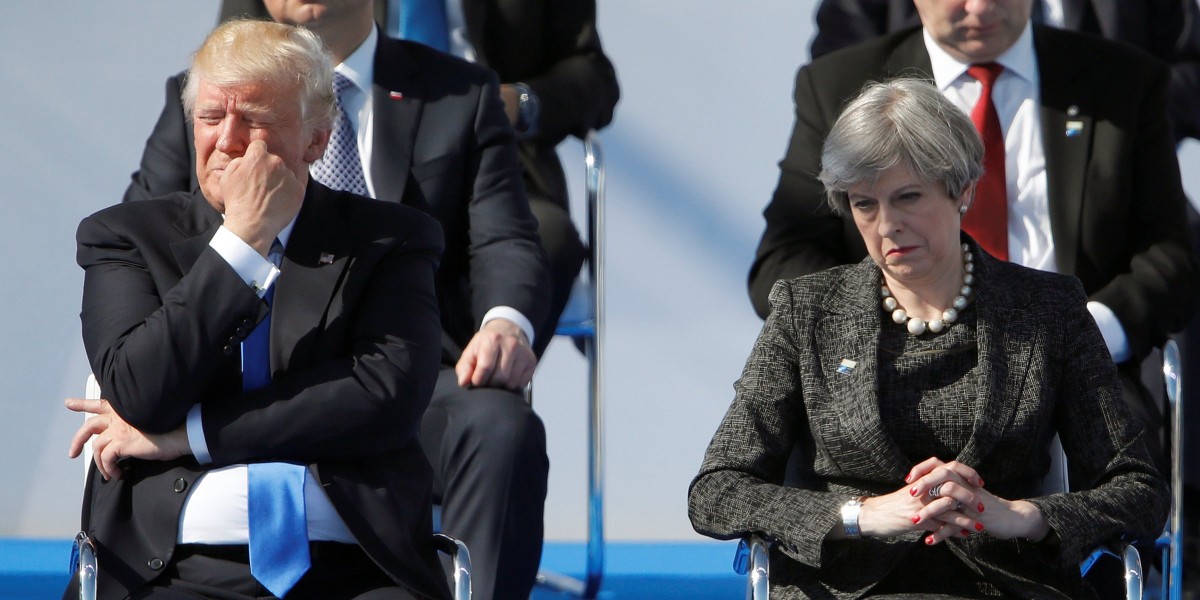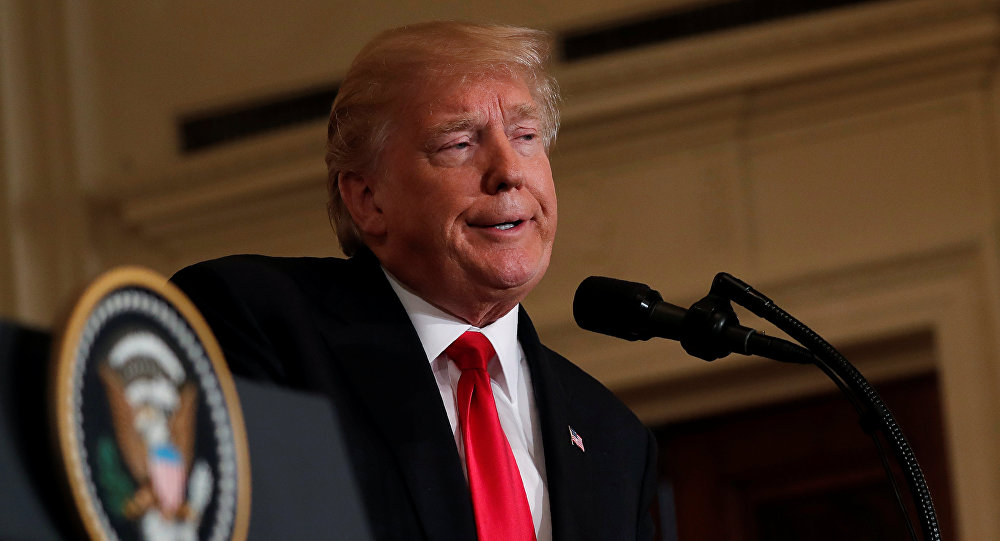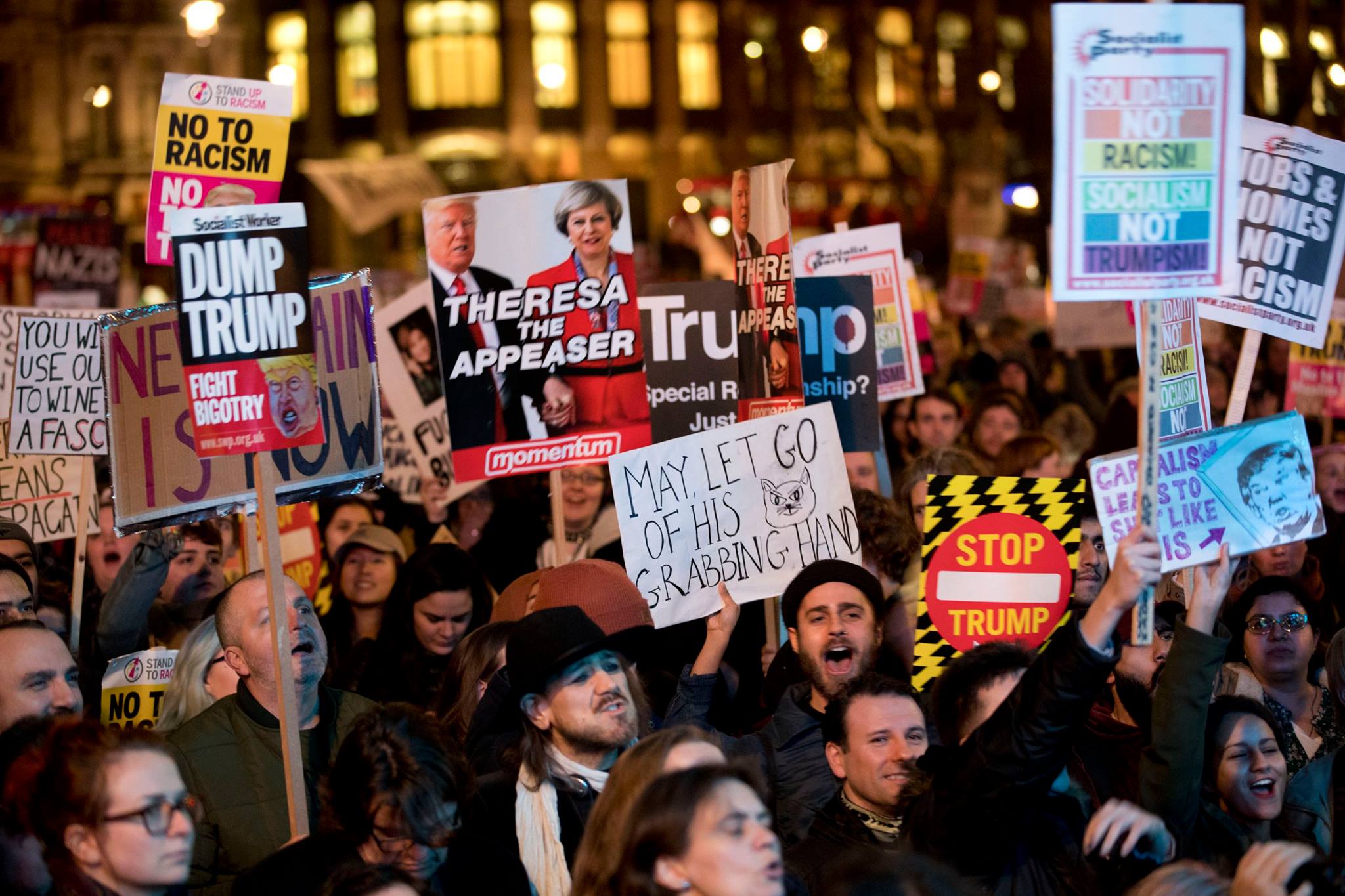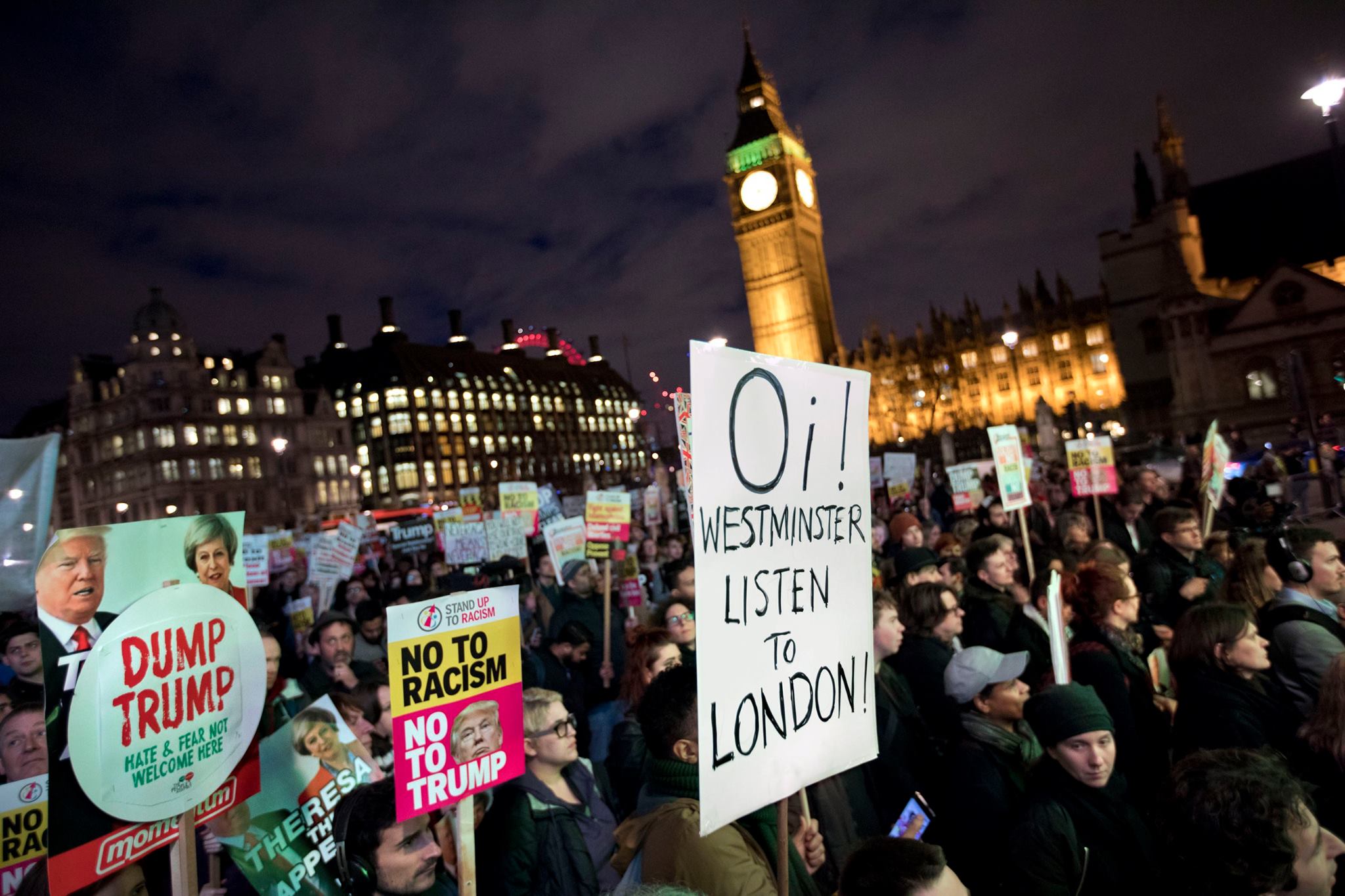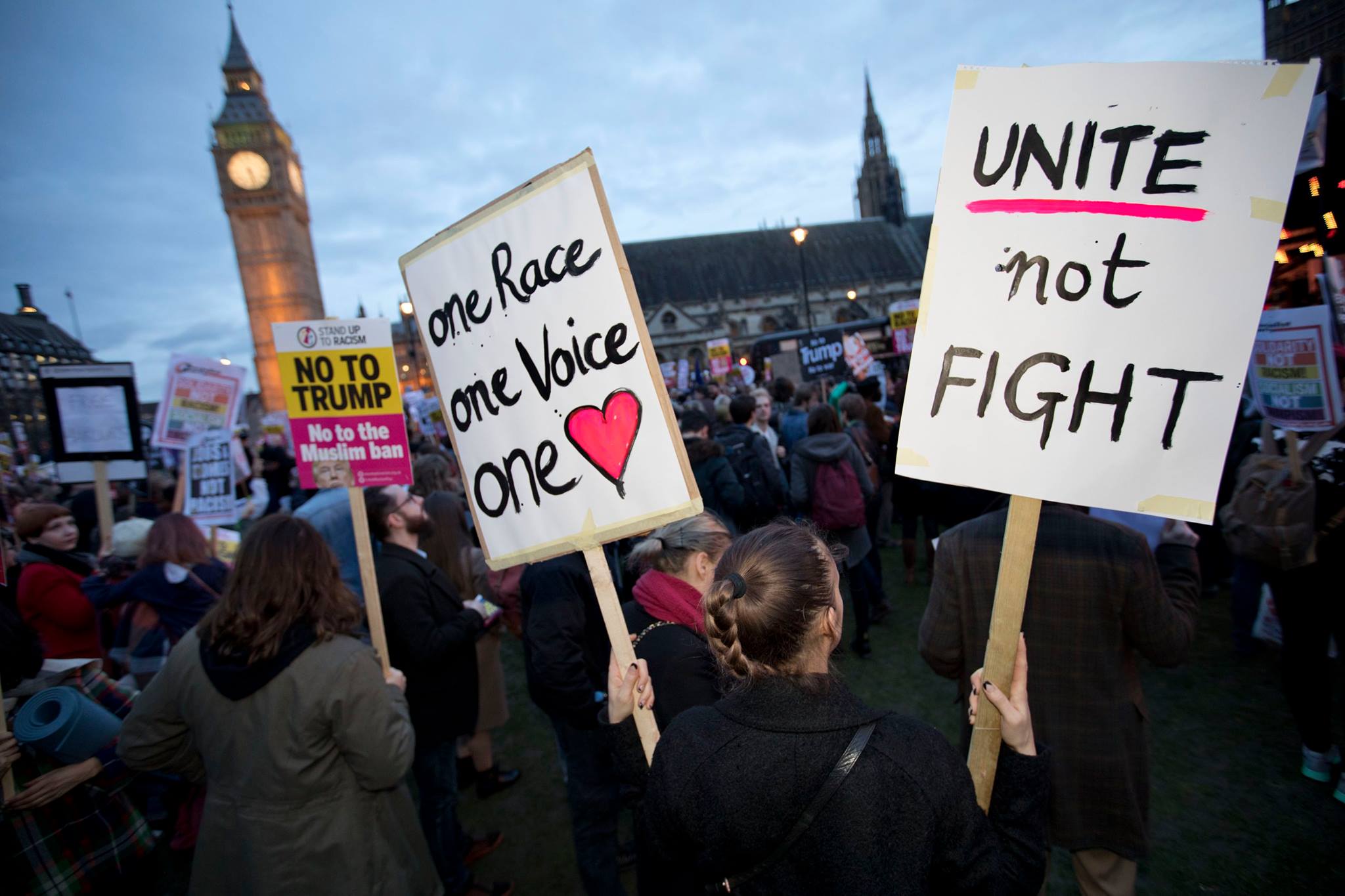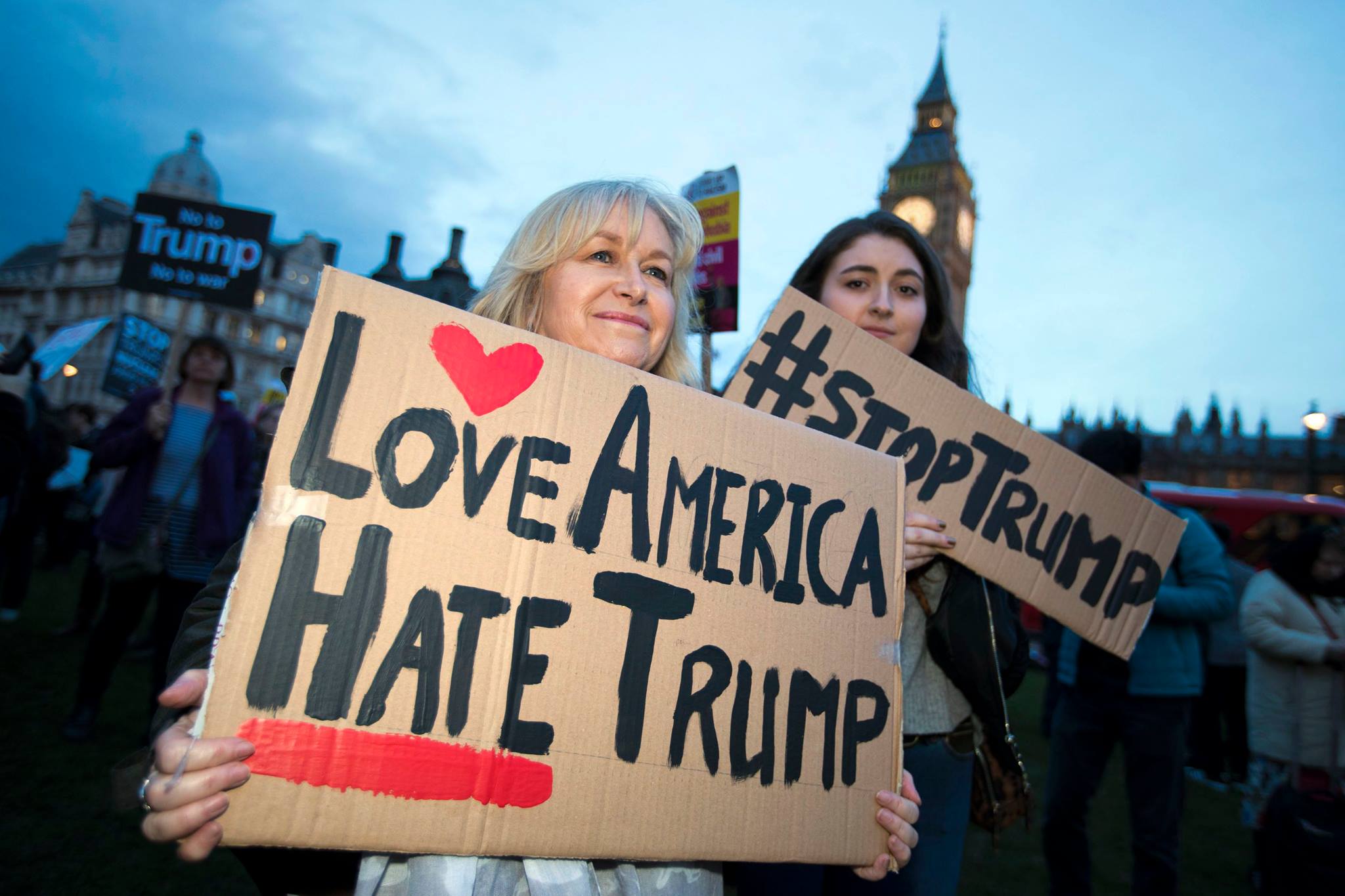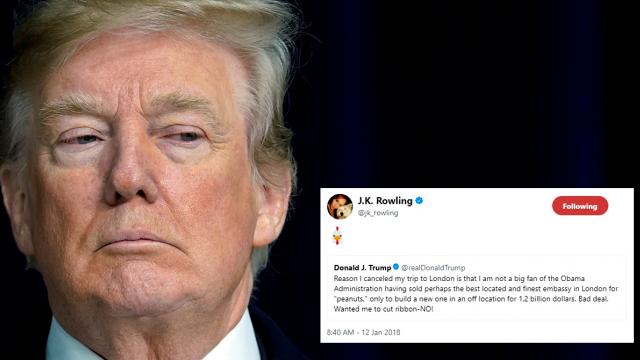
When news emerged last month that Donald Trump was cancelling his February visit to London, much of the country erupted in elation as campaigners hailed the president’s U-turn from Britain a “huge victory for our movement.”
Trump's historic move – try and remember the last time an American president gave Downing Street the thumbs down – demonstrates the profound level of antagonism the British people feel toward Trump, and the power wielded by U.K. protestors. Trump's fear of mass protests and what they would do to his image back home were no doubt the real reason for his change of heart. After all, he has praised the Brexit decision and considers the U.K. one of his greatest allies.
All that, of course, isn't the "official" story. The official story is that Trump cancelled his trip to Britain because he is opposed to opening a new, relocated U.S. Embassy in Vauxhall, a significantly less glamorous area of London than the embassy’s former location in Mayfair.
Weeks before his blundering healthcare comments about large scale NHS protests on Sunday, the president took to Twitter to announce he would skip the London embassy opening because of his discontent that former President Barack Obama had sold the current embassy for “peanuts,” and that the replacement building was constructed for a mere £750 million. “Bad deal,” he fumed.
In typical Trump form, the president failed to acknowledge that plans to relocate the U.S. embassy in London from Mayfair to Vauxhall were originally made in October 2008 during George W. Bush’s presidency.
Regardless, Trump’s cancelled U.K. visit was greeted with glee by people across the U.K. A poll by Left Foot Forward, published one month before Trump's tweet that announced he was calling the visit off, showed that one in 10 people in Britain planned to protest Trump in February.
Asked how they would respond to the U.S. president’s state visit, nine percent of the poll’s respondents said they “would be angry and likely protest the occasion.” A further 30 percent admitted that the visit would make them angry.
The resentment towards the president’s visit even sparked a Stop Trump Movement that organized large, high-profile, anti-Trump demonstrations throughout the U.K. Prior to Trump's u-turn, Stop Trump was preparing for a huge demonstration that supporters claimed would “rival the anti-war protests of the early 2000s.”
According to Stop Trump organizers, more than one million people were likely to join the demonstration. As the group’s Facebook page informed: “Put the date in your diaries: If Donald Trump attempts to sneak into the U.K. to open the US Embassy on 26/27th February 2018 and also pop to see Theresa May at Downing Street – he will be met by a million of us attempting a citizen’s arrest of him for incitement to racial hatred.”
In the wake of Trump's theatrical u-turn, the Stop Trump Coalition referred to the cancelled visit as a “huge victory for our movement.” Former Labour Leader Ed Miliband was quick to point out the real reason for the cancellation, tweeting: “Nope it’s because nobody wanted you to come. And you got the message.”
London Mayor Sadiq Khan was among the first to welcome the news, tweeting that Trump’s visit would have “without doubt been met with mass peaceful protests” and that it was a mistake for Theresa May to have invited him for a state visit.
A New Level of Discord
While Trump has never been popular in the U.K. – as overtly demonstrated by the series of anti-Trump protests that took place across Britain following his inauguration – relations with Trump hit an all-time low late last year when the president decided to retweet anti-Muslim videos posted by Britain First, the far-right extremist group.
One of the videos claimed to show Muslim immigrants hitting a Dutch boy on crutches. The video’s credibility was almost immediately undermined when the Dutch embassy in the U.S. confirmed that the perpetrator of the violence was in fact born and bred in the Netherlands.
Nonetheless, the damage had already been done as the anti-Muslim propaganda video got pushed out to Trump’s 43 million Twitter followers.
The right-wing extremist group Britain First is a sore subject in the U.K., as it was the name that Thomas Mair, who killed Labour MP Jo Cox in 2016, repeatedly shouted when he committed the crime. Even Prime Minister May, who had famously walked hand-in-hand with Trump outside the White House during her state visit to Washington in January 2017, rebuked the president’s promotional support of the hate group.
Unsurprisingly, Trump was angered by the criticism from his Transatlantic ally and immediately hit back at May, taking once again to Twitter to advise the prime minister to focus on the “destructive Radical Islamic Terrorism that is taking place within the United Kingdom.” The only problem: Trump mistakenly used the wrong Twitter handle and the focus of the president’s outburst was a woman named Theresa who has just six Twitter followers.
For now, the British people appear to have won. George Chowbury, a 27-year-old from London, was planning to join the mass Stop Trump protest in February, and recently told Occupy.com: “There’s no place for narrow-minded prejudice on London’s streets. I think we can all breathe a sigh of relief the visit’s been called off.”
But elation that Trump won’t be immediately visiting the U.K. got deflated when the White House announced the president would fly to London later this year for a “working visit,” meaning that it won’t be an official state visit and he won’t meet the Queen. Trump and May apparently discussed the alternative visit during the recent World Economic Forum in Davos, Switzerland, where Trump faced criticism for promoting America First policies to members of the conference.
For the Stop Trump Coalition, no time is a good time to welcome America's reviled president to U.K. shores. “Whenever Trump comes we must ensure there is HUGE OPPOSITION on the streets #RacistsNotWelcome #StopTrump,” the group tweeted.
3 WAYS TO SHOW YOUR SUPPORT
- Log in to post comments

